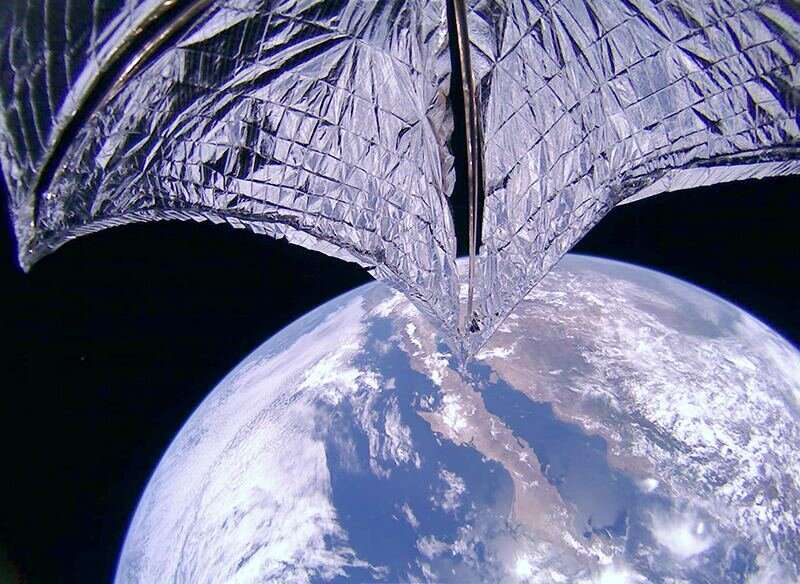"
It will, of course, eventually deorbit. The spacecraft is now sitting at an average altitude of 692km (about 25km lower than its initial orbit). When in sailing mode, it tends to lose less than 20m per day, and on good days even gains altitude. When not sailing, LightSail falls about 50m per day.
It's clear that the mission has been an astounding success, and the Planetary Society is not shy about sharing its results. The LightSail 2 team regularly posts pictures from orbit, which can be seen here.

It's been a long journey to get to this point. Even if you are unfamiliar with the Planetary Society's history with solar sail technology, you can probably guess from the name that LightSail 2 is not their first attempt. The idea was championed early in the Society's history by one of its founders, famed astrophysicist Carl Sagan. Fueled by his passion and influence, a plan was developed that would eventually become Cosmos 1: a 100-kilogram vehicle that launched from a submarine on a Russian Volna rocket in 2005. Unfortunately, a failure with the launch vehicle prevented Cosmos 1 from reaching space.
The Planetary Society didn't give up. With improvements in satellite technology, smaller, cheaper, toaster-size CubeSats were becoming viable test vehicles, allowing the formulation of an ambitious new plan, beginning with LightSail 1, which launched in 2015. Its orbit turned out to be too low for sunlight pressure to overcome atmospheric drag, but it did lay the groundwork for LightSail 2, which has now achieved leaps and bounds beyond its predecessors.
It's worth noting that solar sails have been tested beyond low Earth orbit too. In 2010, the Japanese Space Agency (JAXA) successfully used a solar sail called IKAROS to navigate above the cloud tops of Venus.
It's a long way off, but there is hope that this technology might eventually enable interstellar travel. Initiatives like the Breakthrough Starshot program envision solar sails that, propelled by concentrated laser light, might carry small probes to nearby stars like Alpha Centauri within an incredibly fast travel time of just 20 years. The lessons being learned from LightSail 2 may well be an important early step on the road to distant stars. And for now, they are an inspiring symbol of perseverance and ingenuity (and I don't mean the Mars robots).
Explore further



